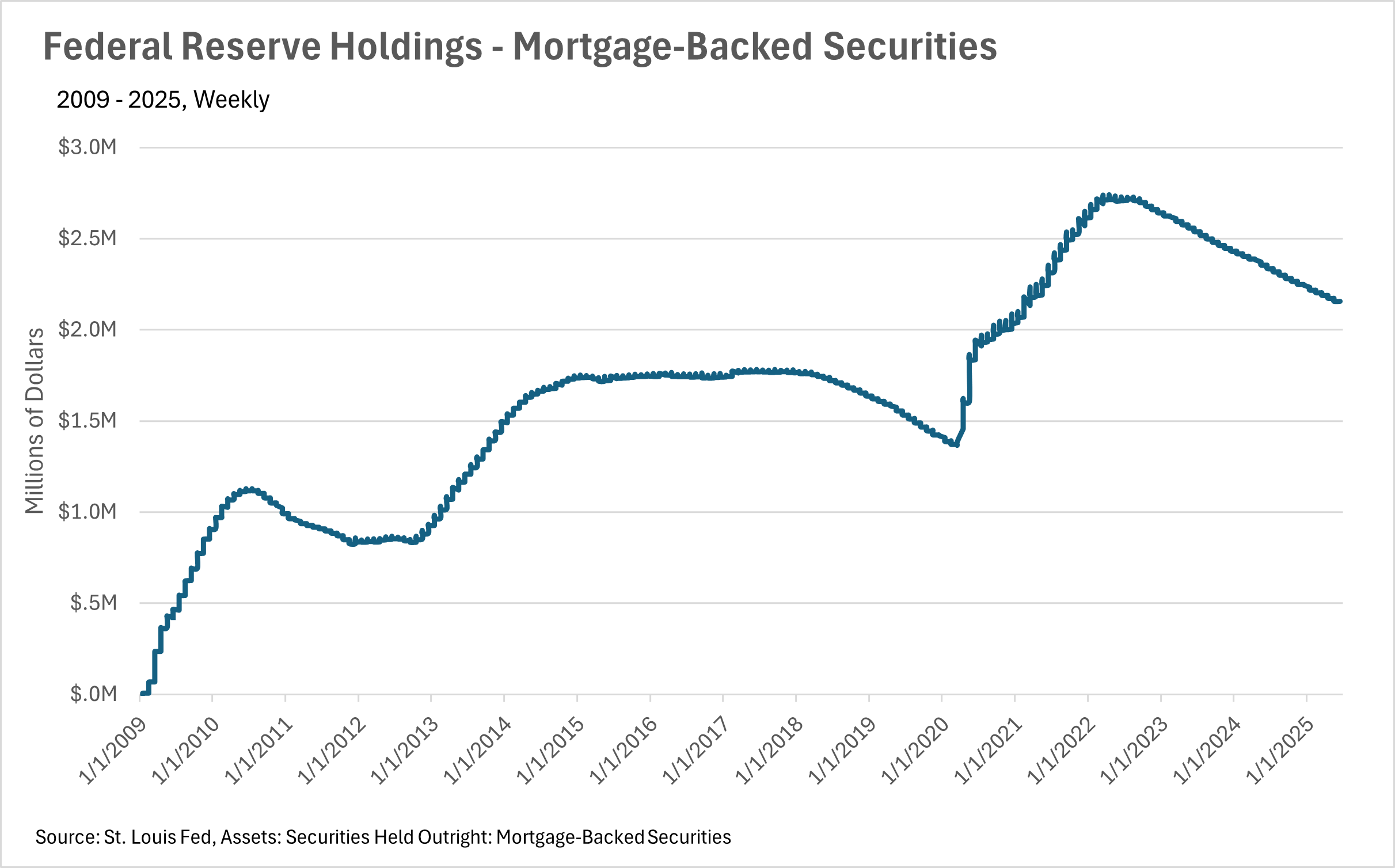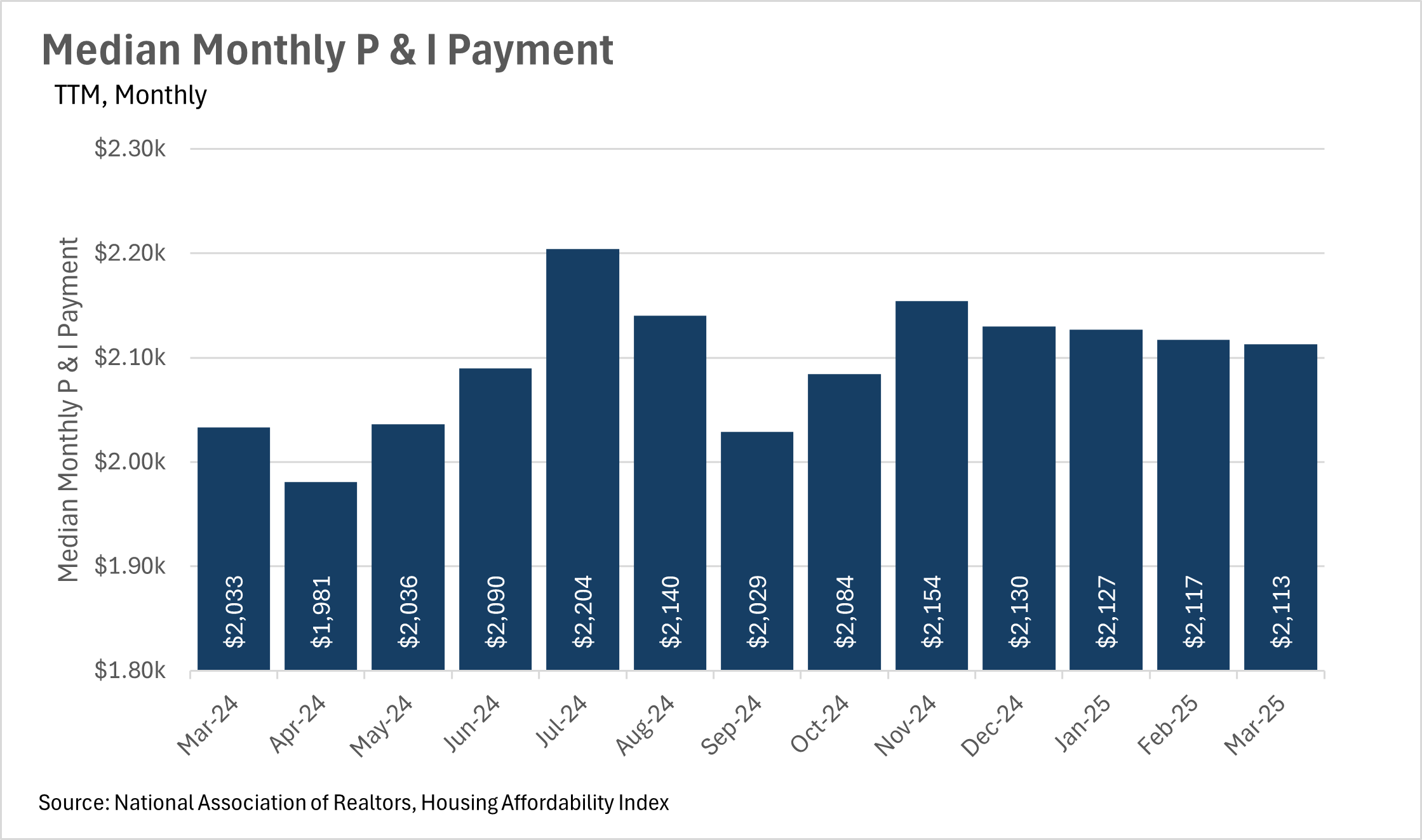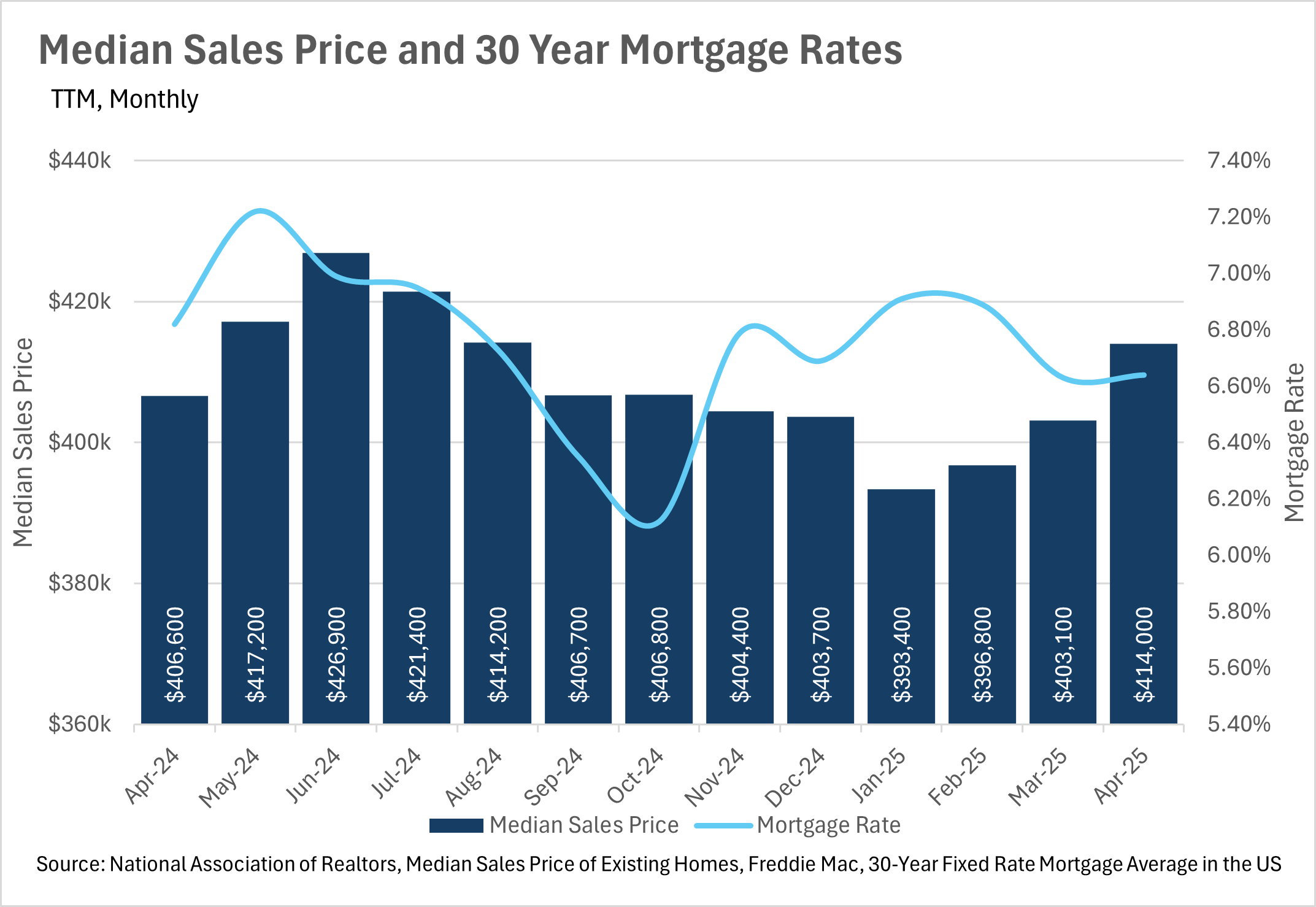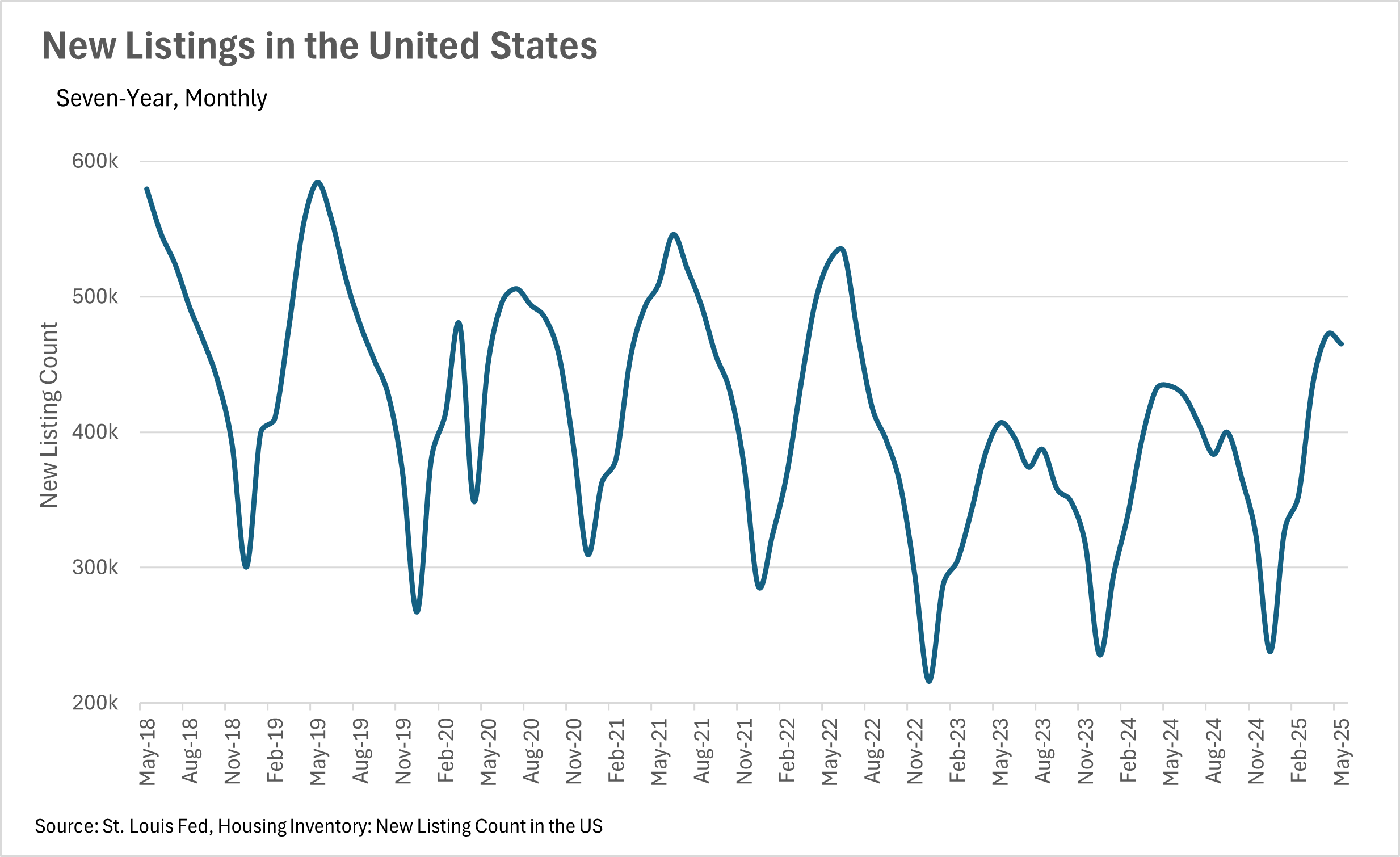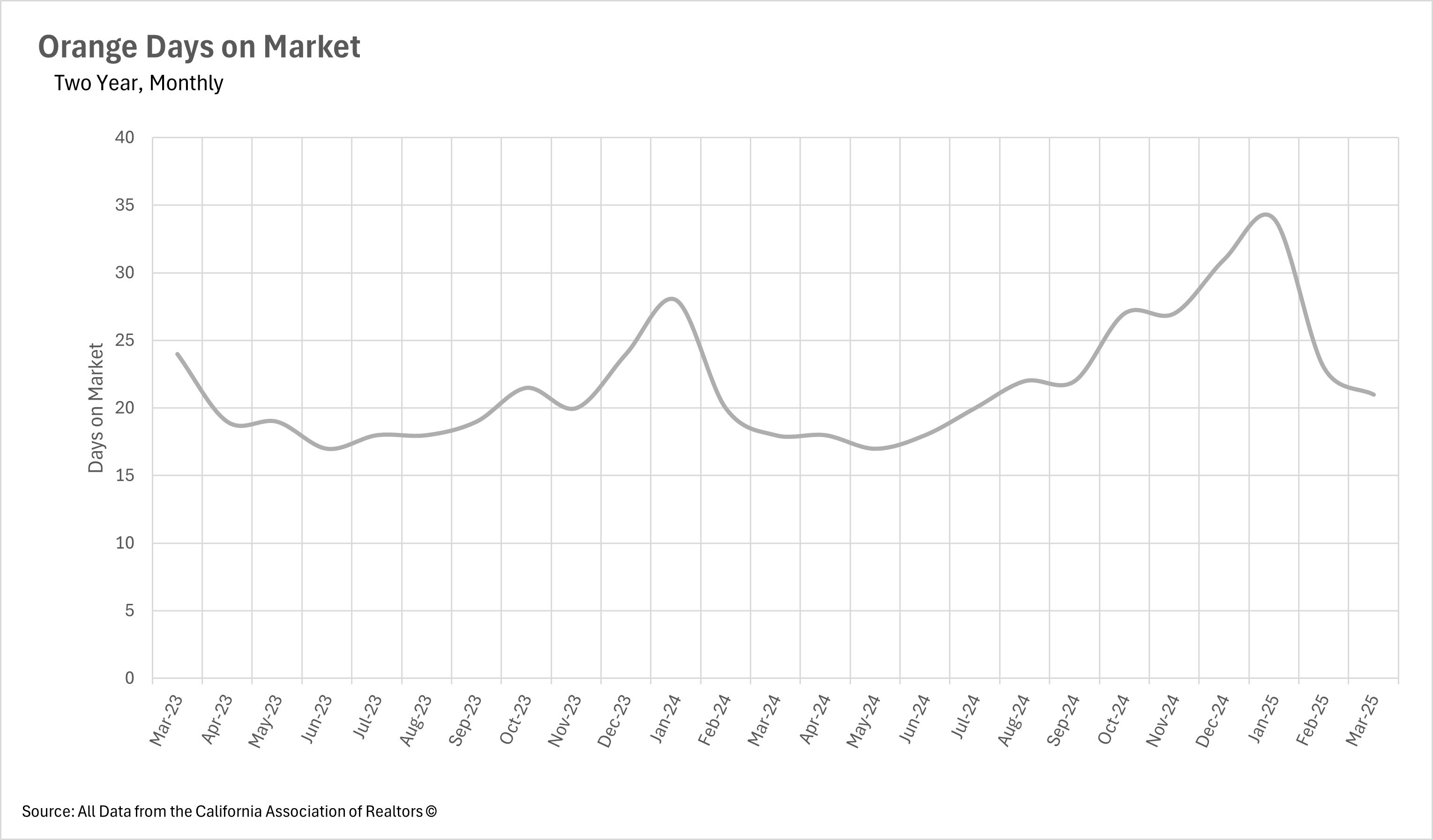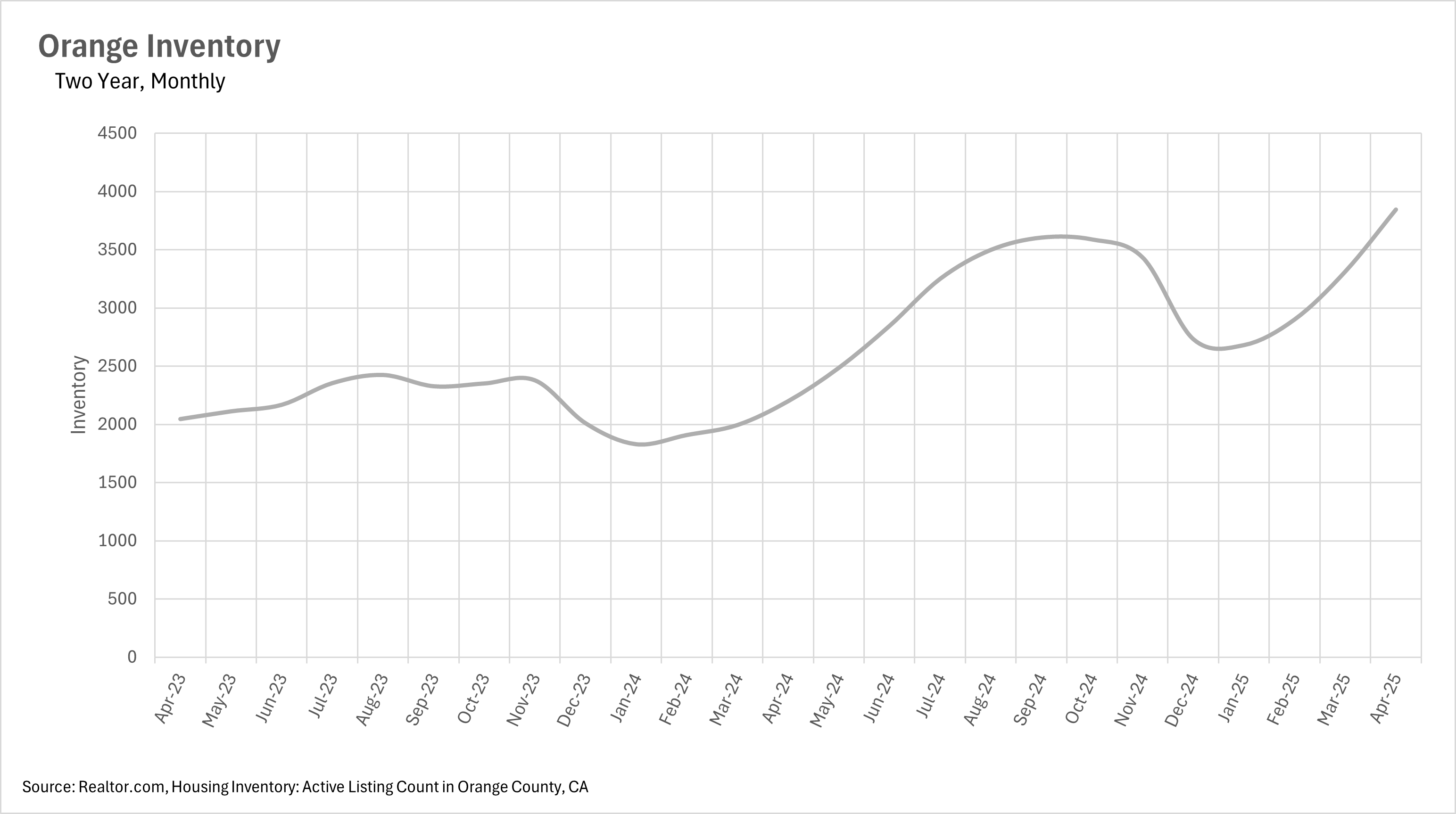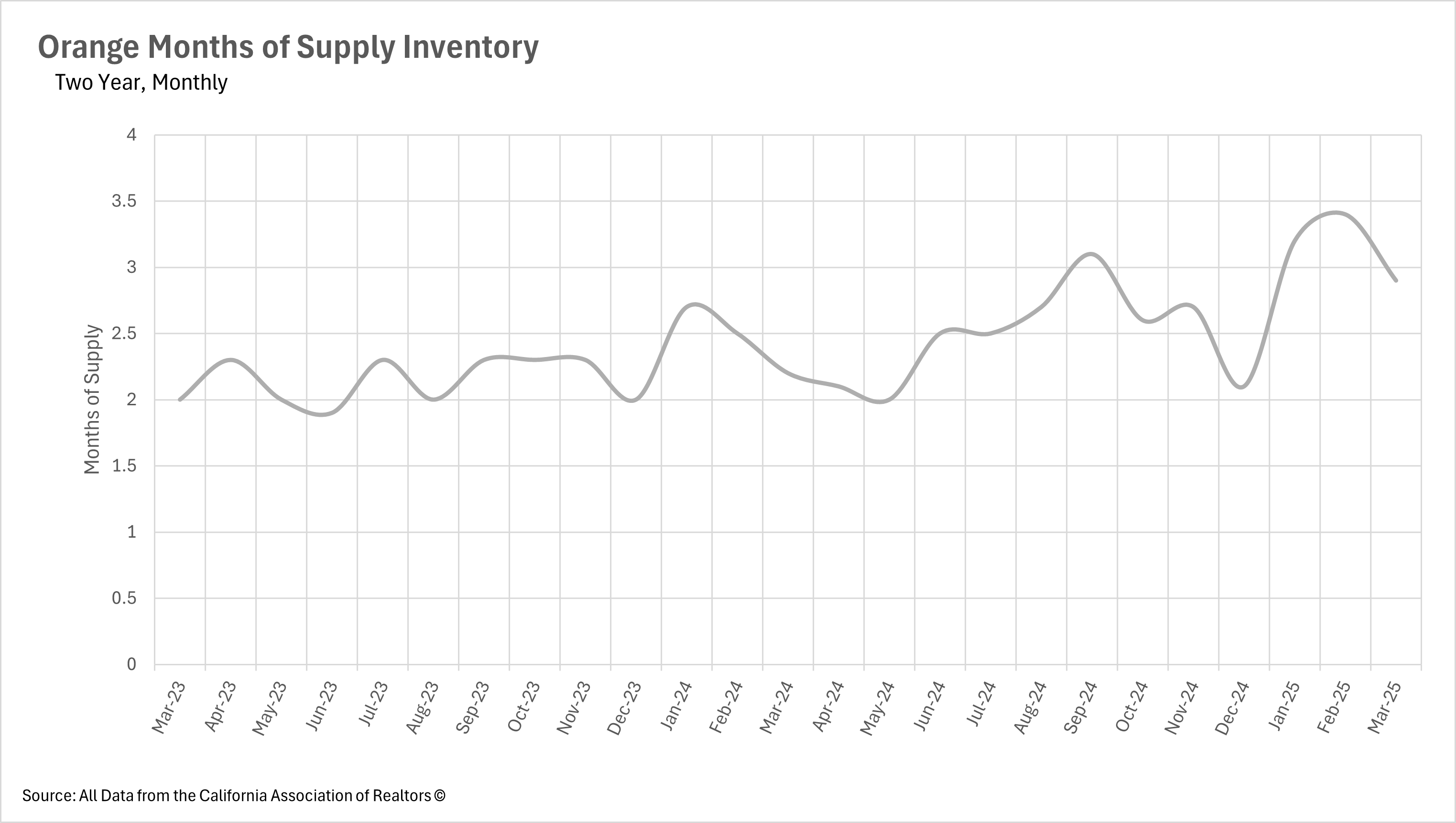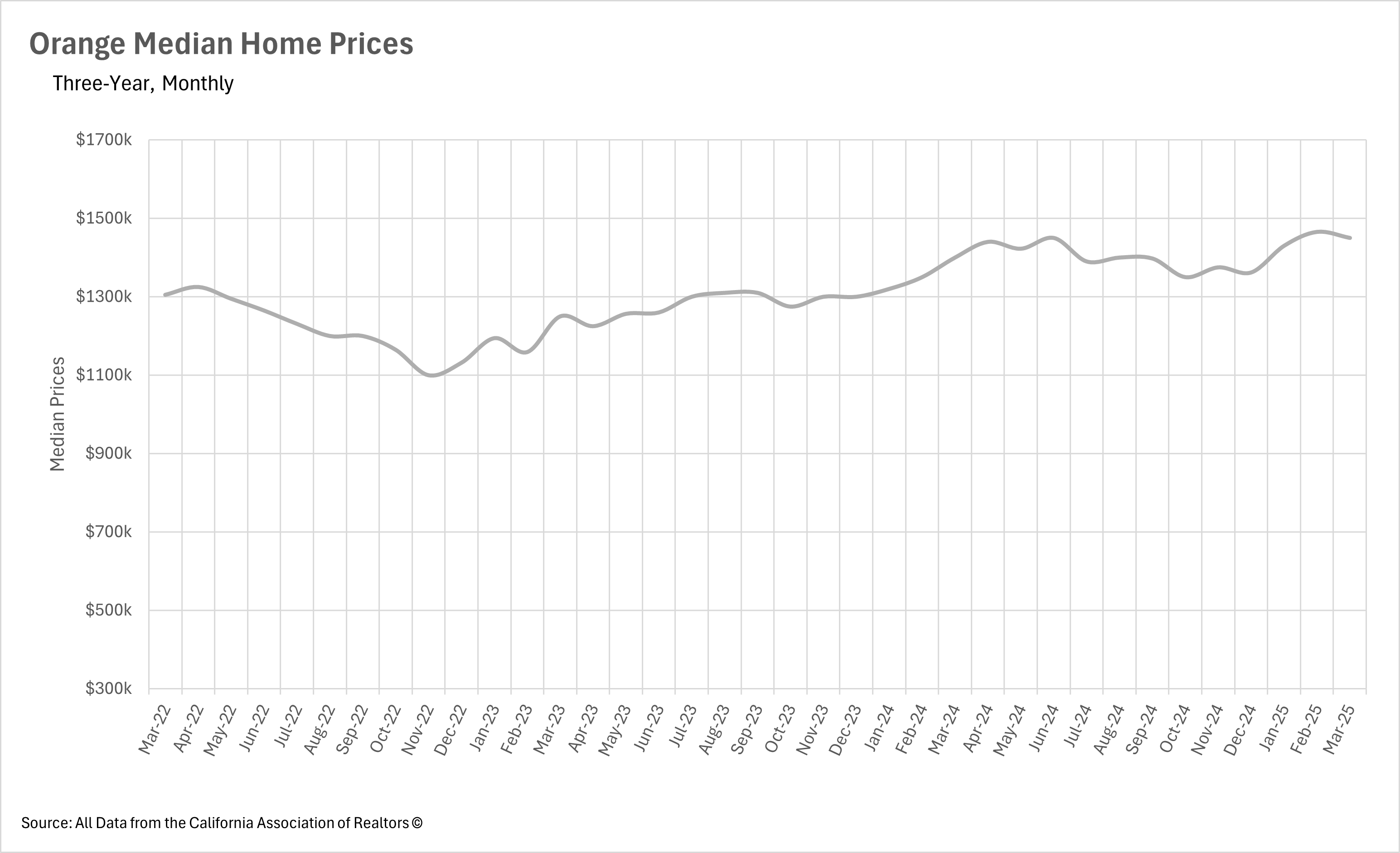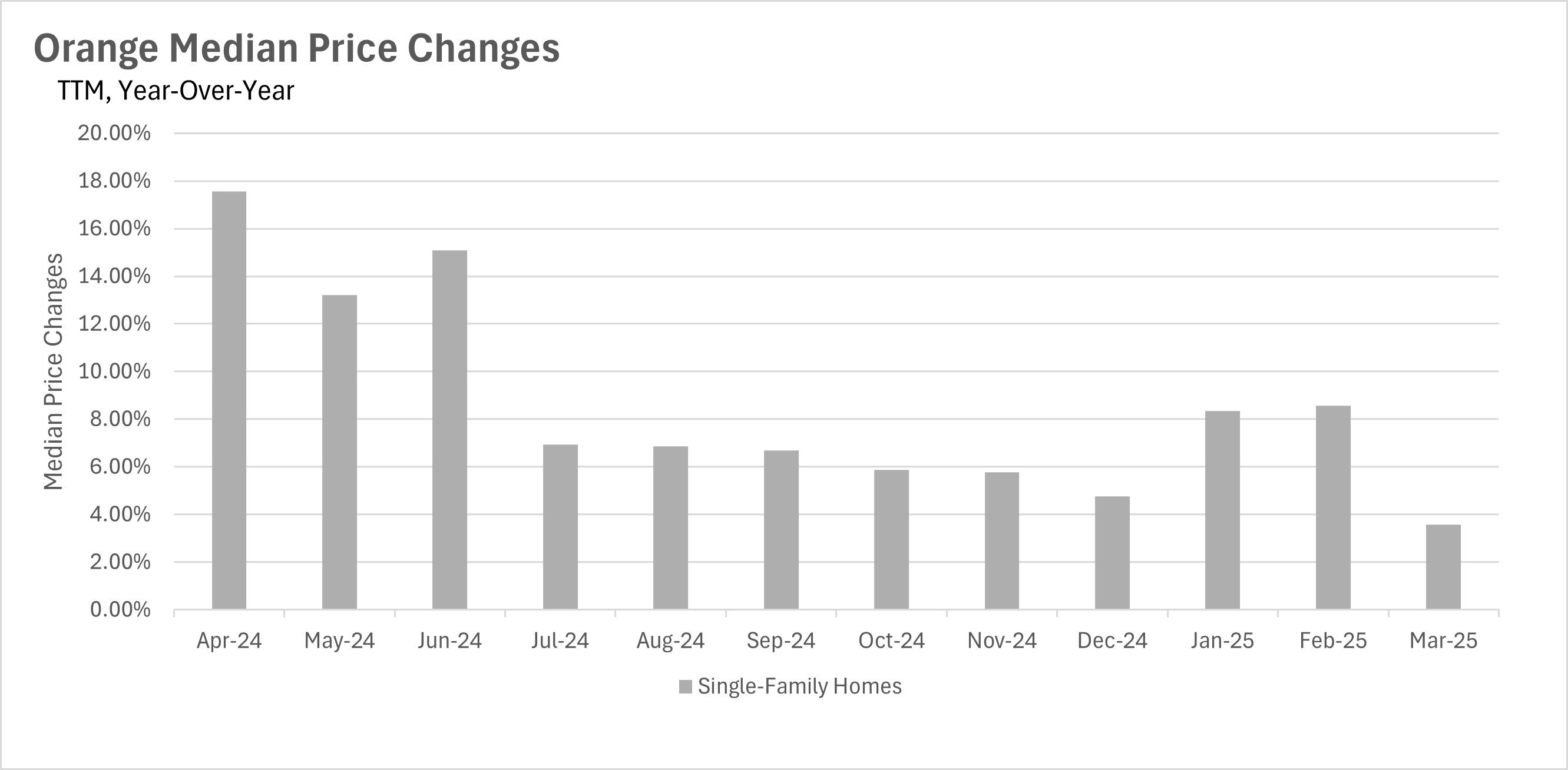The Big Story
Quick Take:
- Although affordability has been improving over the past few months, monthly P&I payments are still quite a bit higher than they were last year.
- Despite political moves that some believe were designed to bring down interest rates, mortgage rates remain high, as the lending market prices in future uncertainty.
- On a national level, inventories are increasing at a very rapid rate, while the number of homes sold has declined.
- Over the past couple of months, the macroeconomic environment has been incredibly unpredictable, a trend which looks like it will continue over the coming months.
Note: You can find the charts & graphs for the Big Story at the end of the following section.
*National Association of REALTORS® data is released two months behind, so we estimate the most recent month's data when possible and appropriate.
Growth in median monthly P&I payments continues to outstrip inflation
For quite some time, we’ve seen monthly inflation readouts with figures in the 2-3% range. Despite the fact that inflation seems to be under wraps for now, the median monthly P&I payment has grown faster than inflation, with the most reading coming in at $2,113, representing a 3.94% increase on a year-over-year basis. This shows that there are still inflationary pressures at work in the housing market.
Factors contributing to this inflation will vary by market. Some markets have more of an issue on the supply side (i.e. higher construction/materials costs), while others have an issue with the demand side (i.e. more demand for homes than supply). It will be especially important to pay attention to this metric over the coming months to get a gauge of how inflation is impacting the housing market.
Mortgage rates remain high, despite looming economic uncertainty
Mortgage rates have remained high, in the mid to high-6% range for quite some time. Some believe that the recent trade war was being implemented in part to bring down interest rates. However, judging by recent commentary from the Fed, the trade war and the associated uncertainty, has only made Fed officials more cautious in utilizing the incredibly powerful economic tool that is the federal funds rate.
This means that we are probably going to see elevated mortgage rates for the foreseeable future, unless the economy takes a considerable turn for the worse. It is worth noting though, that according to the Fed’s “Dot Plot”, the majority of Federal Reserve officials predict the federal funds rate will be in the 3.75-4.00% range by the end of the year, and the 3.25-3.50% range in 2026.
Inventories continue to build across the country
The moves in sales and inventory that we’ve been seeing throughout California over the past few months have been echoed on a national scale. The nation as a whole has seen inventories build, as homes sit on the market for longer. Our most recent data point (April 2025), shows that inventory increased by 20.83% on a year-over-year basis, to 1,450,000. Meanwhile, existing home sales decreased by 3.38%, to 4,000,000.
Despite the growing backlog of inventory, median sale prices are still trending upward, with the median listing selling for $414,000, representing a 1.82% year-over-year increase. To add fuel to the fire, we’ve seen growing numbers of listings hitting the market, with the number of new listings hitting the market increasing by 7.19% on a year-over-year basis.
Ultimately though, this is just what we’re seeing at a national level. As we all know, real estate is an incredibly localized industry, so knowing what’s going on in your own market is pivotal. Below is our local lowdown, that outlines everything you need to know about what’s happening around you in your neighborhood and surrounding areas!
Big Story Data
The Local Lowdown
Quick Take:
-
Median sale prices experienced their first year-over-year decline in years, dropping 1.57% in April 2025 compared to April 2024.
-
Inventory levels reach new heights with single-family home inventory showing a massive 79.28% year-over-year increase in May.
-
The median listing is now spending 22 days on the market, representing a 22.22% increase compared to the same time last year.
Note: You can find the charts/graphs for the Local Lowdown at the end of this section.
Orange County Experiences First Price Decline in Years
For the first time in several years, Orange County has experienced a year-over-year decline in median sale prices. April 2025 saw the median single-family home selling for $1,417,450, representing a 1.57% decrease compared to April 2024's $1,440,000. This marks a significant shift from the robust growth patterns we've seen throughout 2024 and early 2025, when the market was delivering solid appreciation ranging from 3.57% to 8.56% year-over-year. The median price also declined month-over-month by 2.25% from March's $1,450,000, suggesting that the market may be entering a period of price stabilization or even correction after years of strong gains.
Inventory Reaches Record Highs as Supply Floods the Market
The Orange County housing market continues to be flooded with unprecedented levels of inventory. The latest data for May 2025 shows 4,457 single-family homes on the market, representing a staggering 79.28% increase compared to May 2024. This dramatic surge has accelerated month-over-month, with inventory growing 15.98% from April to May 2025. The inventory explosion has been consistent throughout the spring, building from 3,843 homes in April to this new record high. This abundance of choice is fundamentally reshaping the market dynamics, giving buyers an enormous selection of properties to choose from and significantly more negotiating power than they've had in years.
Market Pace Slows as Buyers Take Advantage of Increased Options
With the massive influx of inventory, buyers are clearly taking more time to make their purchasing decisions. The median single-family home in Orange County now sits on the market for 22 days before selling, representing a 22.22% increase from April 2024's 18 days. While this shows a slight uptick from March's 21-day average (a 4.76% month-over-month increase), it represents a significant shift from the rapid-fire market conditions of previous years. This slower pace reflects buyers' newfound ability to be more selective and methodical in their home search, taking advantage of the increased inventory levels to thoroughly evaluate their options before making offers.
Orange County Maintains Its Balanced Market Classification
When determining whether a market is a buyers' market or a sellers' market, we look to the Months of Supply Inventory (MSI) metric. The state of California has historically averaged around three months of MSI, so any area with at or around three months of MSI is considered a balanced market. Any market that has lower than three months of MSI is considered a sellers' market, whereas markets with more than three months of MSI are considered buyers' markets.
With 3.1 months of supply inventory in April 2025, Orange County continues to operate as a balanced market, though it's trending slightly above the balanced threshold. This represents a 6.90% month-over-month increase from March's 2.9 months and a substantial 47.62% year-over-year increase from April 2024's 2.1 months of supply. While still technically in balanced territory, the market is clearly moving in a direction that favors buyers more than it has in recent years, creating more equitable negotiating conditions as we head into the typically busy summer selling season.


